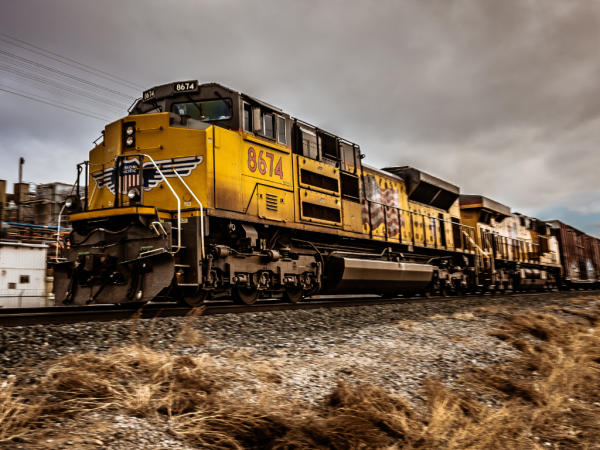 Freight locomotives require massive amounts of energy — nearly four billion gallons of diesel per year — to move tons of goods and materials across the country. In a $1.9 million project supported by Advanced Research Projects Agency- Energy (ARPA-E), CCEE researchers and their collaborators are developing an integrated approach to map out viable pathways for a low carbon future for rail freight.
Freight locomotives require massive amounts of energy — nearly four billion gallons of diesel per year — to move tons of goods and materials across the country. In a $1.9 million project supported by Advanced Research Projects Agency- Energy (ARPA-E), CCEE researchers and their collaborators are developing an integrated approach to map out viable pathways for a low carbon future for rail freight.
Curbing the threat of climate change will require curbing greenhouse gases across every sector of our economy. In the U.S., the transportation sector is the largest contributor greenhouse gasses and, while we are seeing more personal electric vehicles on our city streets, decarbonizing the rail freight industry will pose unique and difficult challenges. Reducing fuel consumption and the associated pollution will require careful planning and the strategic development of new energy infrastructure. Possible decarbonization routes include replacing diesel with freight electrification, hydrogen and biofuels, but each option carries with it advantages and disadvantages.
“NC State is perfectly positioned to address the challenge of reducing pollution from rail freight, given our long-standing strengths in transportation and railroad engineering, as well as our expertise in energy systems and life cycle assessment,” explained project lead Dr. George List, who is joined by Drs. Eleni Bardaka and Jeremiah Johnson, as well as collaborators at Virginia Tech, Oregon State University and DB Consulting. This team brings the diverse set of expertise necessary to tackle this problem. Modeling efforts will include detailed consideration of single train performance, as well as system-wide behaviors through a multi-train network model. The project will also consider potential changes to the broader energy system, including the rapidly expanding share of renewable energy on our power grid, the shifting demand for freight and competition from non-rail alternatives.
“With global supply chains, our goods and materials are being transported over incredible distances,” Johnson said. “As we work to achieve massive reductions in our greenhouse gas emissions in the coming years, we must actively plan for a less polluting rail freight system.”
At the completion of this project, the team will release an open-source model that integrates train performance, network modeling and broader energy system futures to inform infrastructure planning and transportation policy to achieve emissions reductions for rail freight at the lowest possible cost.
The intent is that the model be used by various stakeholders to explore the impacts on decarbonization with different energy sources, which will also be influenced by government policy. Possible model users would be the railroads themselves, the American Association of Railroads (AAR), Surface Transportation Board (STB), Department of Energy, Department of Transportation, energy suppliers (such as utilities), researchers and policymakers.
